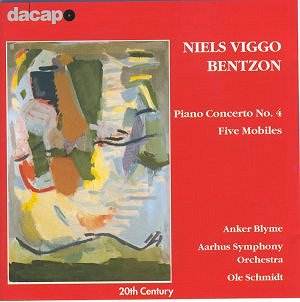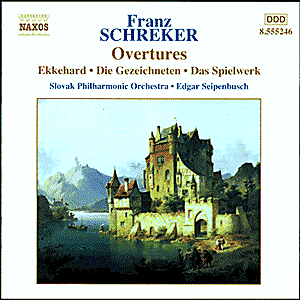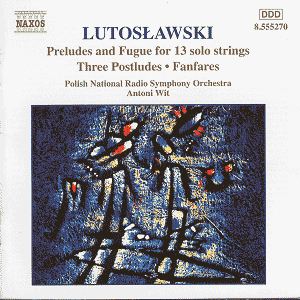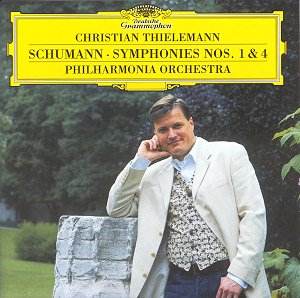 Composer: Niels Viggo Bentzon
Composer: Niels Viggo Bentzon
Works: Piano Concerto No. 4 (1954), Five Mobiles (1960)
Performers: Anker Blyme (piano), Aarhus Symphony Orchestra/Ole Schmidt
Recording: Live performance at Kongreshuset, Aarhus, 1982
Label: DACAPO 8.224110
Niels Viggo Bentzon, a towering figure in 20th-century Danish music, offers a compelling listen in his Piano Concerto No. 4 and the accompanying orchestral miniatures, Five Mobiles. The concerto, premiered in 1954, presents a fascinating intersection of various musical influences, where the dramatic intensity of Beethoven’s “Coriolan” and the Third Piano Concerto interweaves with the lyrical essence of Alban Berg and the rhythmic vitality characteristic of Stravinsky. This synthesis of styles underlines Bentzon’s unique voice, which, while reverent to his predecessors, stands solidly on its own, marked by a remarkably fertile imagination.
Anker Blyme’s performance as the soloist in the concerto reflects both technical prowess and interpretive depth. The first movement, clocking in at approximately seventeen minutes, unfolds with a compelling tension that deftly balances lyricism with robust rhythmic activity. Blyme navigates the intricate passages with precision, particularly in the transition from the tumultuous opening to the more introspective sections that evoke Vaughan Williams’ darker sonorities. The piano’s bell-like descents in the second movement resonate beautifully against the orchestral backdrop, a testament to Blyme’s sensitivity to both dynamic contrast and textural clarity. The "finale", with its rhythmic abundance, showcases not only the pianist’s virtuosity but also a profound understanding of Bentzon’s harmonic language.
The engineering quality of this recording, captured live, allows the listener to appreciate the nuanced interplay between Blyme and the Aarhus Symphony Orchestra under Ole Schmidt’s direction. The balance between piano and orchestra is notably well achieved, with the orchestral colors shining through without overshadowing the soloist. This is particularly evident in the "adagio", where the improvisatory nature of the piano lines is deftly supported by the orchestral fabric, reminiscent of Shostakovich’s sardonic humor. The sound quality retains the vibrancy of a live performance, with the slight imperfections adding an element of authenticity that studio recordings often lack.
In juxtaposition, the Five Mobiles, composed in 1960, encapsulate Bentzon’s exploration of form and color in a series of brief, evocative pieces. Each mobile presents a distinct character, reflecting the inspirations of Alexander Calder’s suspended sculptures. The third mobile, with its delicate interplay of tonality and texture, exhibits a brilliance that recalls Holst’s ethereal “Neptune.” However, the fifth mobile, with its slower chorale-like quality, feels somewhat prosaic in comparison, lacking the vibrancy found in its predecessors. This juxtaposition speaks to Bentzon’s ambitious attempt to explore the limits of orchestration and form, even if not all pieces resonate equally.
Bentzon’s prolific output—comprising fourteen string quartets, twenty-five piano sonatas, and various other forms—speaks to an artist whose dedication to his craft is both admirable and daunting. The late arrival of his first piano concerto at age thirty-nine, particularly from a musician of such virtuosity, is a curious facet of his biography, yet it underscores the calculated patience and depth found in his compositional voice.
This recording stands not only as a testament to Bentzon’s innovative spirit but also as a significant contribution to the repertoire of mid-20th-century concertos. The blend of influences, the clarity of performance, and the quality of the recording all coalesce to create an experience that is both enriching and compelling. Engaging with this music offers an invitation to explore a composer who, despite being less frequently performed, deserves a prominent place in the canon of contemporary classical music.



